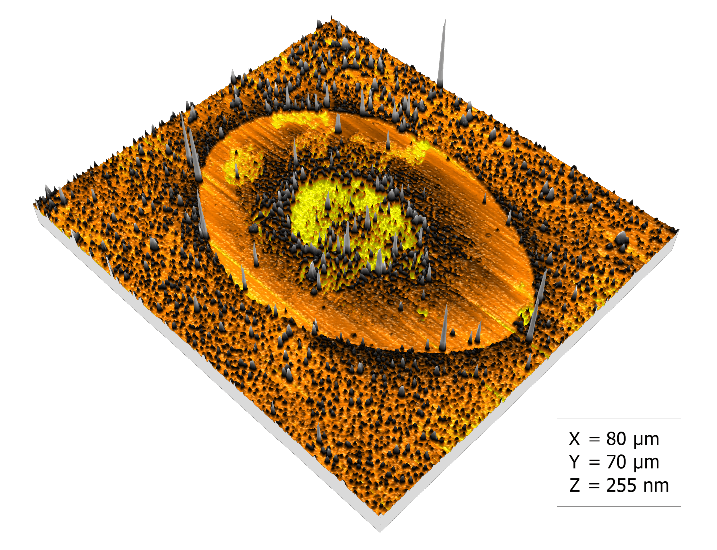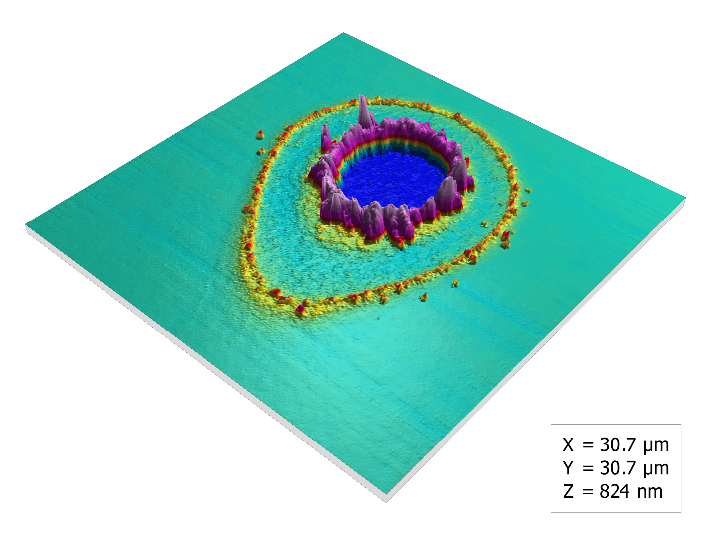Opt. Lett. 43, 3702-3705 (2018)
Drake R. Austin, Kyle R. P. Kafka, Yu Hang Lai, Zhou Wang, Cosmin I. Blaga, and Enam A. Chowdhury
Femtosecond laser damage of germanium from near- to mid-infrared wavelengths
Opt. Express 26, 30371-30382 (2018)
N. Talisa and E. A. Chowdhury
Few cycle pulse laser ablation study of single layer TiO2 thin films using time resolved surface microscopy

Ablation damage on the surface of Ge from a p-polarized laser pulse with a central wavelength of 2.0 μm.
Adapted with permission from Austin et al., Optics Letters, 43, 3702-3705. Copyright 2018 Optics Society of America.

Damage crater on thin-film TiO2 from a single ~9-femtosecond-long laser pulse with a central wavelength of 766 nm.
Adapted with permission from Talisa et al., Optics Express, 26, 30371-30382. Copyright 2018, Optics Society of America
In the study of laser-induced damage, targeted extreme nonlinear optical effects from ultra-short laser pulses have far-reaching implications for everything from optoelectronics to the development of petahertz electronics. Accurate characterization of laser-induced ablation – removal of material beyond the native oxide layer - requires the use of an AFM.
In a pair of papers from the Femto-solid Laboratory at the Ohio State University, the Nanosurf Flex-Axiom system was used to characterize laser-induced damage and ablation of germanium (Ge) and titanium dioxide (TiO2) substrates.
In the first paper, the authors found that two of the commonly used models cannot adequately describe single-shot, femtosecond laser ablation of single-crystal Ge and propose an alternative model, which has good agreement with experimental results.
In the second paper, the authors used pulses as short as 9 femtoseconds to study the ablation dynamics of TiO2 thin-films and compared the results to photoionization simulations.
Images were processed using MountainsMap SPM

